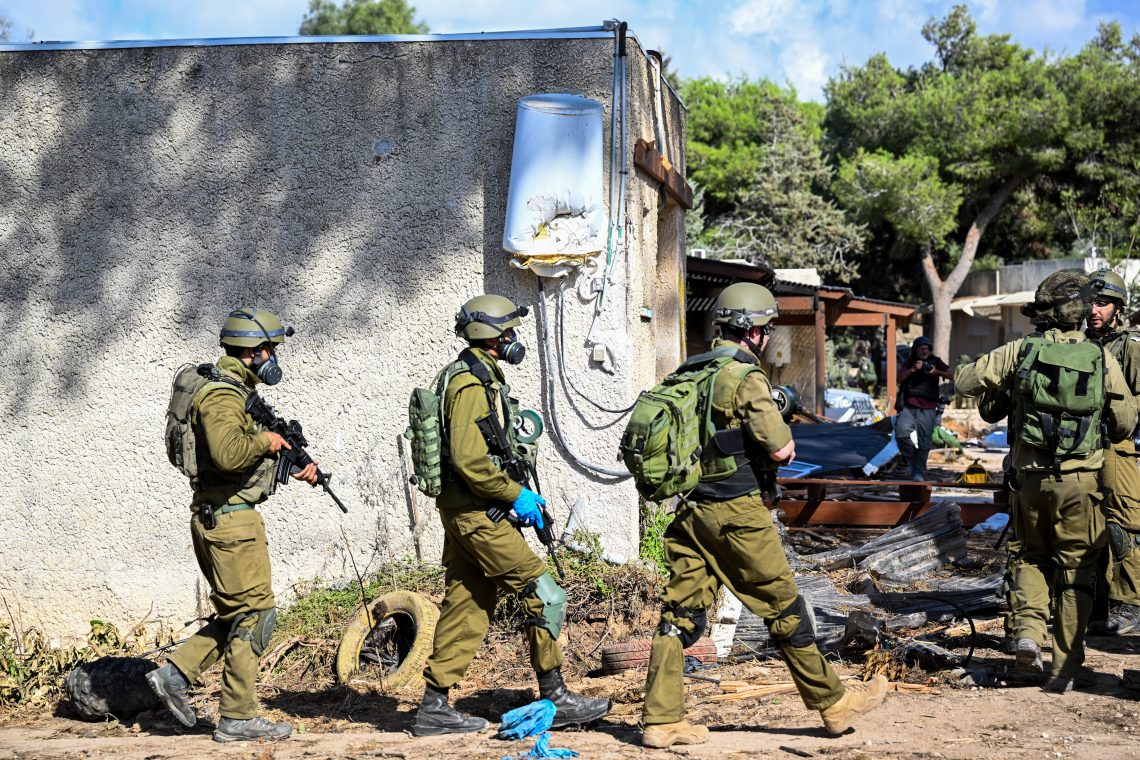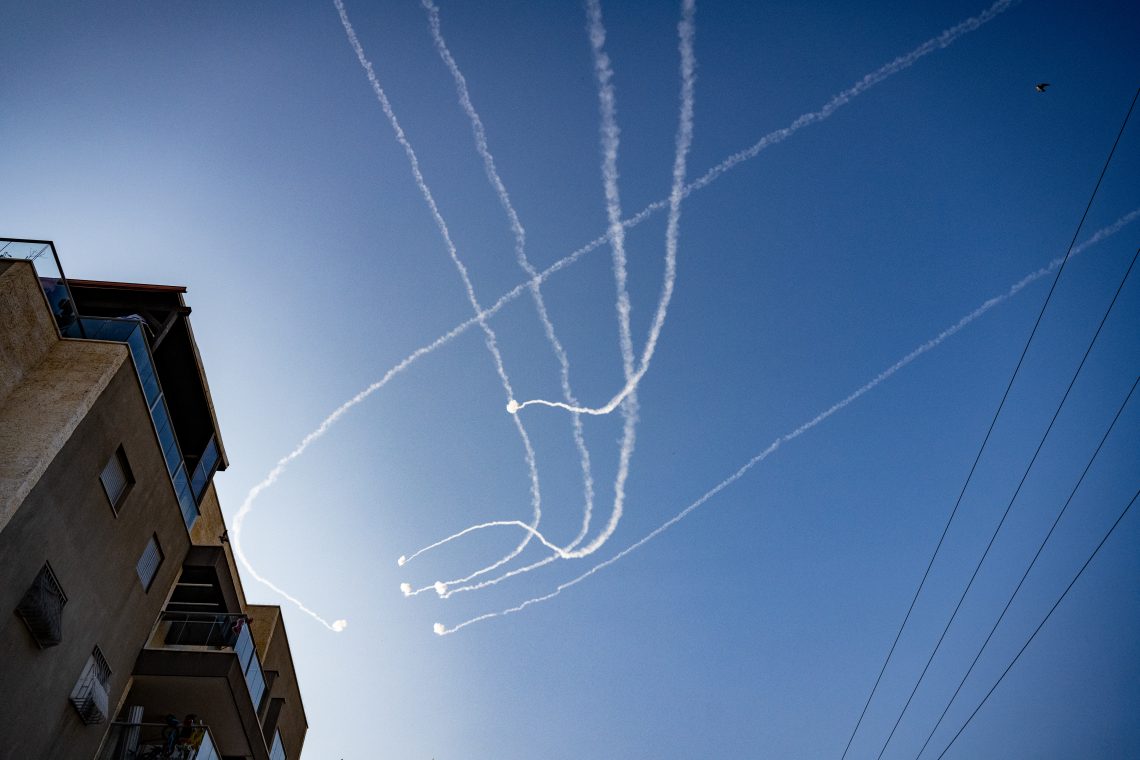Middle East intelligence as an instrument of war and peace
The ability of Hamas to outwit Israel’s intelligence apparatus and launch the October 7 attacks exposed flaws that may prove difficult to fix.

In a nutshell
- Intelligence services hindered by information overload, reliance on technology
- Hamas thwarted Israel via eavesdropping and operational secrecy
- Israeli intelligence will have to retool greatly to prevent future attacks
Every outbreak of conflict is a sign of failure for an intelligence service. The job of these agencies is to know of threats before the irreparable happens. The task of the officers on the ground, whether Israeli or Palestinian, is to identify the enemy’s weak spots and warning signals, analyze them and convey the findings to the political decision-makers ultimately responsible.
The war in Gaza, triggered by the Hamas terrorist group’s attack on Israelis on October 7, will go down in the history books of intelligence failures because it confirms three trends to reckon with: a) information overload generated by technology that impairs analytical acuity; b) the shift from human intelligence to electromagnetic sources; and c) “understanding” is harder than “knowing” – intelligence agencies obtain less than 5 percent of the data they process from closed or confidential sources.”
Missing the warning signs
Hamas had likely been eavesdropping on Israeli communications for several months before striking. A common practice among pro-Iranian armed groups is to make “noise” on social networks, multiplying false alarms, inventing the names of fighters or entire units or factions to feed the Israelis false information and confuse their forces. In this flood of misleading rumors, it is challenging to ascertain what is true.
Nonetheless, several signals should have alerted Israel to the imminence of an attack by Hamas’s Izz al-Din al-Qassam Brigades, particularly its Nukhba force of naval commandos. This summer, a 15-page document marked “Top Secret“ and dated June 15, 2023, was discovered by Israeli forces. It described how to infiltrate a kibbutz and take its residents hostage. It included a cryptic timeline: “Hour S, Day Y.” Egyptian intelligence warned their Israeli counterparts that an operation was being prepared. Shin Bet, the Israeli security agency, collected similar material, but it contained no evidence of an impending big strike.
More by Pierre Boussel
Separating propaganda from reality in Iran’s economy
Successes and uncertainties for the Israeli defense industry
Soul-searching in Egypt
Hamas and the strategy of patience
For a long time, Hamas’s intelligence and special operations structure took the form of autonomous cells that did not know each other. One of the best known, Cell 101 of the al-Aqsa Martyrs Brigade, was responsible for kidnapping Israelis to secure the release of Palestinian prisoners. After a 2006 fratricidal war between the two main Palestinian rivals, Hamas and Fatah, a process of vertical integration was established to accompany the transformation of the movement. It became a parastatal entity with ample rockets and missiles, developed supply lines and intensified military training.
The last military exercise between the Palestinian factions took place on September 12, 2023. The Hard Corner 4 brought together the forces of Hamas, Palestinian Islamic Jihad, the Popular Front for the Liberation of Palestine and the Democratic Front for the Liberation of Palestine. The exercise did not attract much attention. Unlike a conventional army, which works on a variety of strategic scenarios, Hamas never changes. Its enemy is Israel. For years, it has been preparing to breach the security barriers, take control of Israeli posts and infiltrate the kibbutzim. It examines the same battle scenarios repeatedly.
Hamas’s secret weapon was patience. While the underground tunnels in Gaza were being dug with pickaxes over the years, a reconnaissance of the Israeli positions was secretly carried out. A plan mapping the Israeli positions was drawn up to simultaneously neutralize the electromagnetic surveillance systems of the Israeli positions of the Northern and the Southern Brigades and Unit 8200 of the Military Intelligence Service (Aman) at the Urim signal intelligence (SIGINT) base. Hamas observed the Israeli positions long enough to identify the blind spots through which fighters could infiltrate and overwhelm the Israeli lines.
In this instance, the Israelis largely fell victim to their negligence.
Hamas has succeeded in solving an old problem of Palestinian factions: operational secrecy. It was not until 3 a.m. on the morning of October 7 that Ronen Bar, the head of the Israel Security Agency, known as Shin Bet, realized that Hamas’s unusual activity was not an exercise but the prelude to a significant attack.
Maintaining secrecy over the attack was made easier by Gaza’s geography, a small enclave with an extensive tunnel network. Hamas strategists can walk to meeting places and conduct their conversations in person, without telephones or the internet. The technique, a classic in the world of intelligence, consists of physically dismantling computer modems and connecting hard drives “point-to-point” with ordinary cables bought in shops without ever using Wi-Fi or Bluetooth. The centralization of information is entrusted to teams that disconnect from social networks. Orders are no longer written down but memorized by a handful of leaders. Only when the attack is launched are orders given in plain language. By the time the enemy understands them, it is too late.

A cascade of failures
After the October 7 attack, the head of Israeli military intelligence, Aharon Haliva, admitted the failure of his services. The soldiers stationed at the Gaza border had no warning of the impending Hamas operation. Historian Georges-Henri Soutou wrote that surprise “comes not so much from the genius of the one who surprises as from the lack of judgment of the one who is surprised.”
In this instance, the Israelis largely fell victim to their negligence. Convinced it had the situation in Gaza under control, Unit 8200 had stopped listening to Hamas militant hand-held radios a year earlier. Their American partners also believed that it was no longer necessary to focus on the Palestinian factions. The other mistake was the depletion of Palestinian human resources.
For a long time, Israeli intelligence built up intelligence sources through payments, work permits and administrative facilities. Local antagonisms, combined with rivalries among Palestinian families, made it possible to recruit quality people. However, the relentless impoverishment of Gaza and the absence of any political perspective on the conflict eventually dried up the sources. Mistrust between Israelis and Palestinians continues to grow. Recruitment will be even more difficult after the war in Gaza.
In addition, intelligence channels have likely been clogged by the preponderance of fake news refined by Hamas. That is a systemic challenge for all intelligence services: to establish a fluid and relevant chain for the exploitation of collected information, ensuring a vertical flow from the source on the ground to the top without altering or degrading the original data. Failure to do so exposes the intelligence community to what is known as “cascading errors” – errors of judgment passed from desk to desk with no mechanism for challenging, if not stopping and qualifying or modifying the information.
After a long period of internal introspection, Israeli intelligence will reevaluate its information processing chain.
In Israel, as elsewhere, electronic intelligence has its shortcomings. It is powerful, perfectly curious and endowed with an almost infinite memory capacity. But it is not infallible. It does not read of the existence of dormant stockpiles of weapons buried in tunnels. It does not anticipate critical questions. Why were Palestinian fighters carrying North Korean T-58 rifles, copies of the Kalashnikov, on October 7? Where did the missiles mounted on Chinese drones that hit Israeli relay antennas come from?
Although Israeli military intelligence suffered a clear and undeniable defeat, it was able to recover quickly. Its electromagnetic eavesdropping capabilities, combined with local sources, enabled the elimination of several Hamas leaders, including Bilal al-Kedra, commander of the southern Khan Yunis Hamas battalion believed to be responsible for the Nirim kibbutz massacre and other significant attacks. Electronic intelligence made it possible to unearth the audio of harrowing telephone conversations, such as that of a Hamas fighter excitedly calling his parents after executing a dozen Israeli citizens. These few minutes of conversation speak volumes about the barbarity of the attack and the de facto inability of Israeli intelligence to anticipate this mass murder.
Scenarios
Most likely: Israel learns from its mistakes
After a long period of introspection, Israeli intelligence will reevaluate its information processing chain. Human intelligence capabilities will be completely reorganized, and funds will be allocated to rebuild an intelligence network in Gaza and the West Bank, with extensions along the Egyptian border. Despite these initiatives, Israeli recruitment suffers from the legacy of the war and the deterioration of Israel’s image in Arab public opinion. Money cannot buy everything.
Least likely: Inertia prevents major changes
The Israelis will prove unable to carry out an in-depth overhaul of Shin Bet, their internal security agency. Inertia and bureaucratic red tape prevent a thorough reform of Israel’s intelligence services. Some cosmetic measures may be announced following the publication of a Knesset inquiry report, but little truly changes. The war ends without Hamas being eradicated from Gaza. The guns are silent again. Gaza is rebuilt and the Palestinian factions regroup. One day, a spark ignites the powder keg, and everything starts again.
For industry-specific scenarios and bespoke geopolitical intelligence, contact us and we will provide you with more information about our advisory services.









